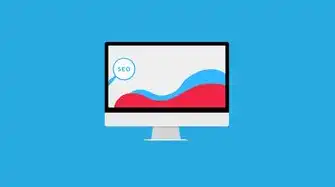本文目录导读:
In today's digital age, having a well-optimized website is crucial for attracting organic traffic and improving your online presence. One of the key aspects of search engine optimization (SEO) is optimizing your website's code, specifically focusing on Cascading Style Sheets (CSS). In this comprehensive guide, we will delve into various techniques to enhance your website's SEO using CSS.

图片来源于网络,如有侵权联系删除
Understanding the Role of CSS in SEO
CSS plays a significant role in determining how your website appears to both users and search engines. By optimizing your CSS, you can improve several factors that directly impact your SEO rankings:
- Loading Speed: Minimizing the size of CSS files and leveraging browser caching can significantly reduce loading times.
- Mobile Responsiveness: Ensuring your website is mobile-friendly by using responsive design principles enhances user experience and improves rankings.
- Code Quality: Clean and semantic HTML combined with optimized CSS contributes to better crawlability by search engine bots.
- Accessibility: Implementing accessible design practices ensures your website is inclusive and user-friendly for all visitors.
Techniques for Optimizing CSS for SEO
Minify CSS Files
Minifying CSS involves removing unnecessary characters from your stylesheet without altering its functionality. This process reduces file sizes, leading to faster load times and improved performance. Tools like Google's PageSpeed Insights or online minification services can help automate this process.
Example:
/* Original CSS */
body {
margin: 0;
padding: 20px;
}
h1 {
font-size: 24px;
color: #333;
}
Minified CSS:
body{margin:0;padding:20px}h1{font-size:24px;color:#333}
Leverage Browser Caching
Enabling browser caching allows returning visitors to load your site faster since their browsers store certain elements locally. This not only improves user experience but also reduces server load, contributing to better SEO rankings.
Example:
<!-- Cache-Control Header --> <meta http-equiv="Cache-Control" content="max-age=31536000">
Use Responsive Design Principles
Responsive web design ensures that your website adapts seamlessly across different devices and screen sizes. Utilize CSS media queries to create fluid layouts that provide an optimal viewing experience regardless of the device used.
Example:
@media (max-width: 768px) {
body {
padding: 10px;
}
h1 {
font-size: 18px;
}
}
Optimize Image Stylesheets
Images are often large and can slow down page load times if not optimized properly. Use CSS to control image dimensions and ensure they are appropriately sized for each viewport.
Example:

图片来源于网络,如有侵权联系删除
img {
width: 100%;
height: auto;
}
Enhance Accessibility
Accessible designs make your website more user-friendly for individuals with disabilities. Ensure your CSS supports keyboard navigation, provides alternative text for images, and uses semantic HTML tags.
Example:
a:focus,
input:focus,
button:focus {
outline: none;
}
[role="button"] {
cursor: pointer;
}
Avoid Redundant CSS Rules
Remove any duplicate or redundant CSS rules to streamline your stylesheets and improve maintainability. This practice helps prevent bloated code and potential conflicts between conflicting styles.
Example:
/* Remove Duplicate Rule */
p { margin-bottom: 15px; }
Use External CSS Libraries Wisely
While external libraries like Bootstrap offer convenience, be cautious about over-reliance as they can increase your page weight. Only include necessary components and consider customizing them to fit your specific needs.
Example:
<link rel="stylesheet" href="https://stackpath.bootstrapcdn.com/bootstrap/4.5.2/css/bootstrap.min.css">
Monitor and Analyze Performance
Regularly monitor your website's performance using tools such as Google Analytics or GTmetrix. Identify bottlenecks and optimize accordingly to ensure continuous improvement in SEO rankings.
Conclusion
Optimizing your website's CSS is a critical aspect of achieving higher search engine rankings and providing a superior user experience. By implementing these techniques, you can enhance your website's loading speed, responsiveness, accessibility, and overall performance. Remember that SEO is an ongoing process, so stay updated with the latest trends and best practices to keep your website competitive in the ever-evolving digital landscape.
标签: #seo css



评论列表